We hope that each of you, our readers, will enjoy and appreciate this article we present about these 4 Captivating Marine Crabs. It was certainly our pleasure to gather the information for you. May it provide you with both education and increased awareness.
Certainly, these few species listed herein represent only a portion of the similar marvels found in the oceans. It’s our belief, though, that they serve as excellent representations of the wonders that exist. Check out some of our other articles for similar marvels.
Halloween Hermit Crab
Halloween Hermit Crab Facts
- Leading off this article about these 4 Captivating Marine Crabs comes the remarkable creature known as the Halloween Hermit Crab.
- The attention-grabbing term applied to the species serves as the most frequently used common name for this natural wonder. It does have another, less often used title, though. That’s the less showy but descriptive term of the striped hermit crab.
- Inside of scientific circles, however, it’s typically better known by its official title. Unfortunately, that’s an extremely difficult moniker for the layperson to pronounce. That’s because it bears the tongue-twisting technical name of the Ciliopagurus strigatus.
- The remarkable Arthropod received that hard to say title due to the efforts of the German naturalist, Johann Friedrich Wilhelm Herbst. He recorded the first recognition of it as a separate and dsitinct species. That noteworthy deed occurred in 1804.
- Thankfully, the unusual Halloween Hermit Crab seems to be maintaining a population base that’s sizeable and relatively stable. That fortunate state also appears to hold true throughout the entirety of its range. The IUCN thus has no Red List status for it.
- The species nevertheless does face some potential threats to its continued existence in the wild, at least. Most of these stem from the actions of humans. They include the common perils of habitat dedragation and loss, as well as climate change, of course.
Halloween Hermit Crab Physical Description
The magnficent Halloween Hermit Crab clearly merits its appreciation due to its appearance. This serves as ample proof that Nature places no importance on physical size. That holds true due to the fact that this marvel of evolution remain quite small in stature.
It additionally adheres to the pattern of growth typical to its many related species. That’s the fact that it displays a certain degree of the phyiological characteristic of sexual dimorphism. In th case of this crustacean, that trait manifests itself in terms of simple size.
More precisely, males attain greater average measurements than their female counterparts. The gender-based differences remain small, however. It’s therefore often difficult for the untrained expert to distinguish the sexes based on simple visual observation.
Overall, though, individuals of this interesting species reach a mature body length equaling about 2 in (5 cm). Though small compared to many crustaceans, it’s actually relatively large among hermit crabs. Including the shell, it rarely weighs more than 1 lb (0.5 kg).
The gorgeous Halloween Hermit Crab also boasts some other appealing qualities, as well. Its body manifests a clearly flattened, shield. This structure averages about 0.32 in (0.8 cm) in length. Uniquely, this aspect of its body also typically presents a bright white color.
It’s the rest of the body, combined with this, that earns the creature its name, though. Its eye stalks show a vibrant orange hue. The body presents a deep red shade, while the legs display a bright orange color, with horizontal white stripes. That’s truly a remarkable look!
- Kingdom: Animalia
- Phylum: Arthropoda
- Class: Malacostraca
- Order: Decapoda
- Family: Diogenidae
- Genus: Ciliopagaurus
- Species: C. strigatus
Halloween Hermit Crab Distribution, Habitat, and Ecology
The aptly-named Halloween Hermit Crab evolved as native to a moderately wide expanse of the marine waters of the world. The exact parameters of that range likely won’t surprise many people. That’s true since it developed as endemic to most of the Indo-Pacific.
Within that greater zone of habitation, though, its population appears more commonly in certain areas. That’s not uncommon among its kindred. A few of the smaller areas in which it makes its home include the waters around Hawaii, and even parts of the Red Sea.
The visually impressive work of Nature also displays strong preferences in its choice of habitat. Broadly speaking, it lives almost exclusively along regions of coral substrate. This most frequently consists of areas of the sandy regions surrounding coral reefs, not on them.
Yet its specific requirements for where the crustacean lives do not stop there. The creature also strongly prefers very shallow regions of the ocean. These typically consist of tropical, coastal areas. In point of fact, it’s rarely seen at depths greater than 50 ft (15.2 m).
Again following patterns similar to its relatives, the Halloween Hermit Crab typically lives a strong social life. Due to this tendency, the vast majority of mature specimens in the wild live usually in large groups. These sometimes number as many as 100 individuals.
It evolved as nocturnal in nature, and that’s when the animal does most of its hunting. It feeds as an omnivore, and a scavenger, as well. It also consumes almost anything it finds of a suitable size. That menu list includes such items as detritus, live prey, and algae.
Japanese Spider Crab
Japanese Spider Crab Facts
- Next up among our choices for inclusion in this compendium of 4 Captivating Marine Crabs we present the amazing Japanese Spider Crab.
- This monstrous Arthropod most frequently goes by the informative and descriptive common name for understandable reasons. That’s the english language version, though. In Japanese, this magnificent animal’s known as the taka-ashi-gani.
- Among scientific researchers, however, it’s more commonly referred to by yet another title. That’s the technical name for the species. Like most such terms, though, it’s quite difficult for the layperson to pronounce. Its formal name is Macrocheira kaempferi.
- The massive marine creature received that name due to the efforts of Coenraad Jacob Temminck. The noted Dutch zoologist accomplished the first formal acknowledgement of it as a separate and distinct species. He achieved that feat in the year 1836.
- Regardless of which of these titles one chooses to use, it stands out from all of its kindred. This remarkable product of Nature and evolution ranks as the largest of all known living arthropods. That alone distinguishes it from its numerous relatives.
- Sadly, the population numbers of the Japanese Spider Crab are dwindling. Regrettably, this trend further appears to hold true throughout the entirety of its range. Despite this, however, it does not yet show on the IUCN Red List of Threatened Species.
- It nevertheless faces multiple threats to its continued existence as a species. Most of these stem from the actions of humans. These include overfishing and habitat loss. It also now faces the same looming peril of climate change as all earth’s species.
Japanese Spider Crab Physical Description
The breathtaking Japanese Spider Crab instantly grabs the attention of those fortunate enough to encounter it. The reason for that remains undeniable. This particular Arthropod literally ranks as a giant among its kind, and the viewer easily confirms this status.
Like many related creatures, it also displays a certain degree of the physiological characteristic known as sexual dimorphism. In its specific case, the males typically display slightly longer chelipeds, also known as claws. This trait also occurs in some related species.
In all other aspects, the genders usually present the same overall appearance. The body attains an average width measuring roughly 16 in (40 cm). In terms of weight, though, individuals of both sexes reach a mean mass totaling approximately 42 lb (19.1 kg).
Yet it’s the legs of the animal that stand out the most. These appendages also account for the vast majority of its size. That’s because this marine crab develops a truly mind-boggling legspan. Mature specimens achieve spans of as much as 12.5 ft (3.8 m)!
The gender-based difference found among the Japanese Spider Crab, meanwhile, manifests itself in a very precise manner. That’s in the simple size of its chelipeds, also known as claws. Among males, these reach a significantly greater length than among the females.
The carapace itself is quite bumpy in nature. In coloring, though, all specimens present the same basic pattern. This consists of a primarily bright orange background. Multiple white spots generally augment this, though. That’s especially true on the greatly out-sized legs.
- Kingdom: Animalia
- Phylum: Arthropoda
- Class: Crustacea
- Order: Decapoda
- Family: Inachidae
- Genus: Macrocheira
- Species: M. kaempferi
Japanese Spider Crab Distribution, Habitat, and Ecology
Unfortunately, the amazing Japanese Spider Crab appears to have evolved as native to a very small section of the globe. Its very name provides a clear indication of that range, of course. It developed as endemic to a very specific and limited portion of Asia.
The majority of that exact zone of habitation, obviously, consists of the waters around Japan. Even there, though, it’s limited in range. The creature mainly seems to live off the southern coasts of the island of Honshu. Small numbers do appear in two other tiny spots, though.
These consist of the marine waters near the coast of the Iwate Prefecture, in Japan, and along the coastline of several parts of Taiwan. In each of these separate regions, however, the Decapod displays decided preferences regarding its choice of habitat.
Individuals prefer to inhabit various vents and small holes along the ocean floor. The awesome species also presents a preference for a certain range of depths. Examples of this natural marvel are only known to live at depths ranging from 160 – 1,970 ft (50 – 600 m).
Like its many kin, the Japanese Spidere Crab evolved as omnivorous in nature. It therefore consumes both plant and animal matter, seemingly indiscriminately. The crab often preys of small molluscs, in addition to eating plants and algae. It also sometimes eats carrion.
Astoundingly, the females sometimes lay as many as 1.5 million eggs per breeding season! These then hatch after an average of a mere 10 days. Its precise lifespan remains undetermined by science, but many researchers estimate it could live in excess of 100 years.
Arrow Crab
Arrow Crab Facts
- Placing third within this list of 4 Captivating Marine Crabs, the awesome creature that is the Arrow Crab does so only due to random selection.
- The descriptive term given to it serves as the most frequently used common name for this intriguing product of evolution. The animal does have another general name, though. That’s the only slightly more descriptive name of yellowline arrow crab.
- Within scientific circles, however, it’s more typically referred to by its formal moniker. That’s an almost impossible to pronounce term for the layperson, though. That’s because the invertebrate bears the formal title of the Stenorhynchus seticornus.
- It received that tongue-twisting name due to the efforts of the German naturalist, Johann Friedrich Wilhelm Herbst. He accomplished the first official recognition of it as a separate and distinct species. He managed this scientifically noteworthy feat in 1788.
- The population of the Arrow Crab appears to be both sizeable and relatively stable. That fortunate situation also seems to hold true throughout the entirety of its native range. The IUCN, therefore, presently has no listing for it on the organization’s Red List.
- Nevertheless, it must be considered to be facing at least some potential threats to its continued existence. Degradation and outright loss of its native habitat certainly pose dangers to it. Both of these stem either directly or indirectly from climate change.
Arrow Crab Physical Description
The amazing Arrow Crab evolved a physical form that immediately draws the attention of those who encounter it. It does so due to a distinctive trait. That’s the fact that this aspect of the Arthropod presents as vastly different from the majority of related species.
It also differs from most of its kin in that it manifests no discernible degree of sexual dimorphism. This holds true in regards to both overall appearance and sheer size. That tends to make identifying male and female individuals difficult for all but trained experts.
While it impresses observers, it doesn’t do so because of its size. That’s true since it remains a small member of its Order. The central carapace develops as extremely elongated in shape. But, this only attains an average length of roughly 2.4 in (6 cm) in mature adults.
Attached to the slightly triangular body, the rostrum also develops as highly elongated. This protrusion from the head is drawn out into a long point. It additionally displays serrated edges. The combination provides for a highly distinctive physical appearance.
Its legs also manifest as extremely long and relatively thin. These reach an average length of approximately 3.9 in (10 cm). These appendages typically present as either yellow or reddish in color. Strikingly, the attached claws appear as either violet or blue in coloring.
The color patterns of the rest of the body of the Arrow Crab qualify as highly variable between individuals. This also holds true regardless of gender. The body usually shows combinations of yellow, cream, or gold. It’s also marked with brown, black, or blue lines.
- Kingdom: Animalia
- Phylum: Arthropoda
- Class: Malacostraca
- Order: Decapoda
- Family: Inachidae
- Genus: Stenorhynchus
- Species: S. seticornis
Arrow Crab Distribution, Habitat, and Ecology
Unfortunately for it, the fascinating Arrow Crab evolved as native to a somewhat limited region of the globe. Overall, that zone of habitation falls within the boundaries of the Atlantic Ocean. Yet, inside of the that greater area, it appears in only a specific section.
To the north, that territory extends as far as the waters off the shore of North Carolina, in the United States. From that portion of North America, its range runs south to Argentina. Its area of occupation also includes most of the Caribbean Sea, as well as around Bermuda.
It further displays decided preferences in terms of its choice of habitat types. These do, however, serve to limit its area of habitation further. That’s due to the fact that the animal appears almost exclusively in relatively shallow depths. This rarely exceeds 30 ft (9.1 m).
These regions also primarily consist of sections of coral reef. Yet the invertebrate also makes its home in a few other types of habitat, though these usually occur near coral. They include such places as rocky bottoms, gravel and sand regions, and shallow sub-tidal zones.
Much like many of its kindred, the Arrow Crab evolved as primarily nocturnal in activity. It’s also highly territorial in nature. It feeds opportunistically, consuming a range of small invertebrates common to coral reefs. This mainly includes feather duster worms, though.
Breeding occurs at different times across its range, due to local environmental factors. Follwoing mating, however, the female carries the eggs until they’re ready to hatch. Once born, the larvae swim to the surface, and feed on plankton until reaching adulthood.
Candy Crab
Candy Crab Facts
- Closing out this article about these 4 Captivating Marine Crabs we present the delicate marvel appropriately known as the Candy Crab.
- This dazzlingly colored Crustacean most frequently goes by the common name we’ve used here for wholly understandable reasons. This marvel of Nature also goes by several other general names, however. None are as appealing to the senses, however.
- These alternate terms include such distinctive appellations as the commensal soft coral crab, the Oates’s soft coral crab, and the Dendronephthya crab. Most of them, though, suitably serve to describe the unique Arthropod in at least one way or another.
- Meanwhile, scientific professionals, such as researchers, typically refer to the creature by its scientific name. That’s the somewhat hard to pronounce term of Hoplophrys oatesi. This tiny wonder further represents the sole member of its entire genus.
- The highly respected American malacologist and educator John Henderson Jr, made the first formal acknowledgement of the animal as a separate and distinct species. The eminent researcher made this scientifically noteworthy recognition in the year 1893.
- The Candy Crab appears to be maintaining a population base that’s both sizeable and stable. This status also seems to hold true throughout the entirety of its natural range. The IUCN, therefore, currently has no listing for it the organization’s Red List.
- The delicate wonder of evolution nevertheless must be considered to be facing at least some threats to its existence, though. Habitat loss certainly poses a possible danger. It’s greatest threat, however, likely consists of the ongoing threat of climate change.
Candy Crab Physical Description
The stunning invertebrate known as the Candy Crab easily draws the eye of those fortunate enough to encounter it. The impressive creature’s best known for its appearance, though, not it’s size. That’s because it evolved as an extremely tiny species of crustacean.
Unlike many of its brethren, however, this remarkable animal displays no noticeable degree of the physiological characteristic of sexual dimorphism. Distinguishing the genders therefore often presents a challenge for any but the trained professional.
This tendency further extends to both appearance and size. Mature adults of both genders attain an overall body length measuring roughly 0.6 – 0.8 in (1.5 – 2 cm). Exceptional specimens do occur, of course, but even these rarely exceed this size by much.
The body of adult individuals, of both sexes, also manifests numerous sharply pointed spines extending outward. Out of its five pairs of legs, the first pair possesses small claws. While small, these two appendages nonetheless remain comparatively powerful.
Yet its the coloring of the gorgeous Candy Crab that generally garners the most appreciation. That’s due to the fact that this consists of numerous colors, typically bright. These vary between individuals, to fit its location, but include yellow, pink, orange, and white.
- Kingdom: Animalia
- Phylum: Arthropoda
- Class: Malacostraca
- Order: Decapoda
- Family: Epialtidae
- Genus: Hoplophrys
- Species: H. oatesi
Candy Crab Distribution, Habitat, and Ecology
Fortunately, both for the Decapod itself, and those who appreciate Nature, the Candy Crab inhabits a comparatively broad swathe of the globe. That’s due to the fact that the amazing animal evolved as endemic to the majority of the beautiful Indo-Pacific region.
This includes large portions of the coastlines of both North America and South America, for starters. Yet the intrepid species also appears along the shores of Europe and Africa, as well. But its greatest concentration lies along the shores of Australia and Asia.
Even there, though, it displays decided preferences in its choice of habitat that limit its potential range. That’s because it only inhabits the relatively shallow regions. This most frequently occurs along the coastlines, of course, but also extends to near islands.
More specifically, it only makes its home within a very small range of depths. This extends from a known maximum of 295 ft (90 m) to roughly 3.3 ft (1 m). It also typically resides either on or very near sections of coral. There, its coloring provides excellent camouflage.
The magnificent Candy Crab also developed a mutually beneficial relationship with its host coral. It keeps the coral clean of debris, and even defends it from predators. For disguise, the animal even cuts off polyps from the coral, and attaches them to its own shell!
The host coral, meanwhile, provides the diminutive crab with both shelter and food from its own leftovers. This wonder of evolution most frequently consumes quantitites of plankton, however. Its own predators consist of a wide range of species, including various fish.
4 Captivating Marine Crabs
It’s our hope that each of you enjoyed reading, and hopefully learning from, this article we’ve written about these 4 Captivating Marine Crabs. It’s also our hope that doing so has left you with either a new or renewed appreciation for such wonders of Nature.
Unfortunately, however, many of their kindred around the world now find themselves facing strong threats to their continued existence as a species. Many of those dangers, in fact, stem from the actions of mankind. We must do all we can to protect and preserve them all.
Check out our other articles on 5 Amazing Moths of Asia, Earth’s Many Stunning Waterfalls, 4 Gorgeous European Gorges, The Mighty Tornado, 6 Mysterious Natural Phenomena
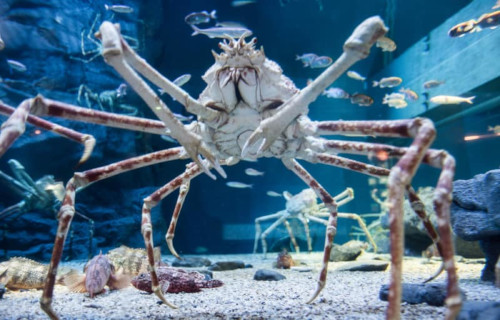
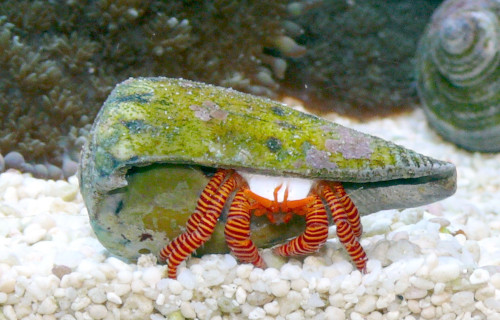
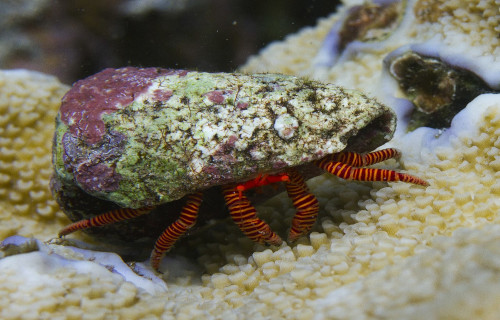
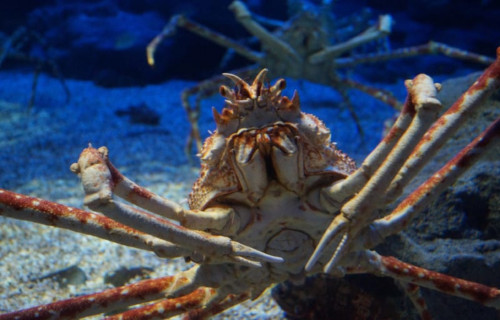
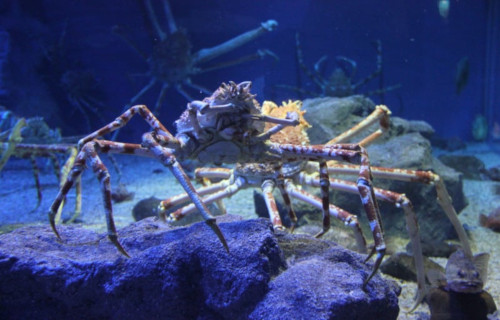
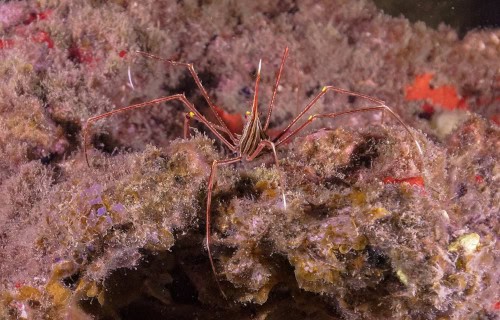
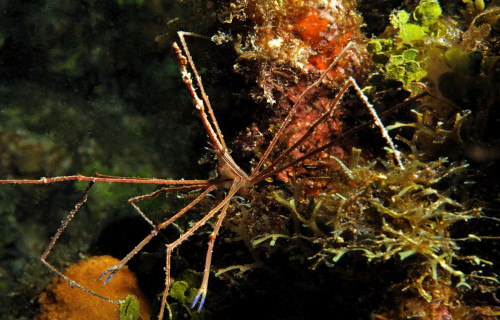
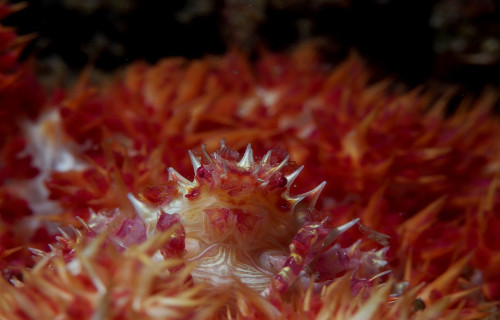
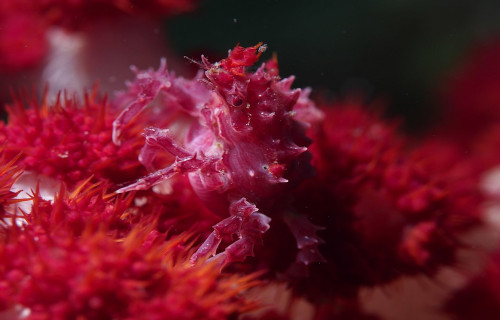
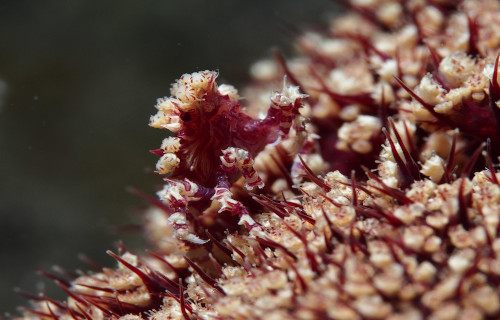









Leave a Reply